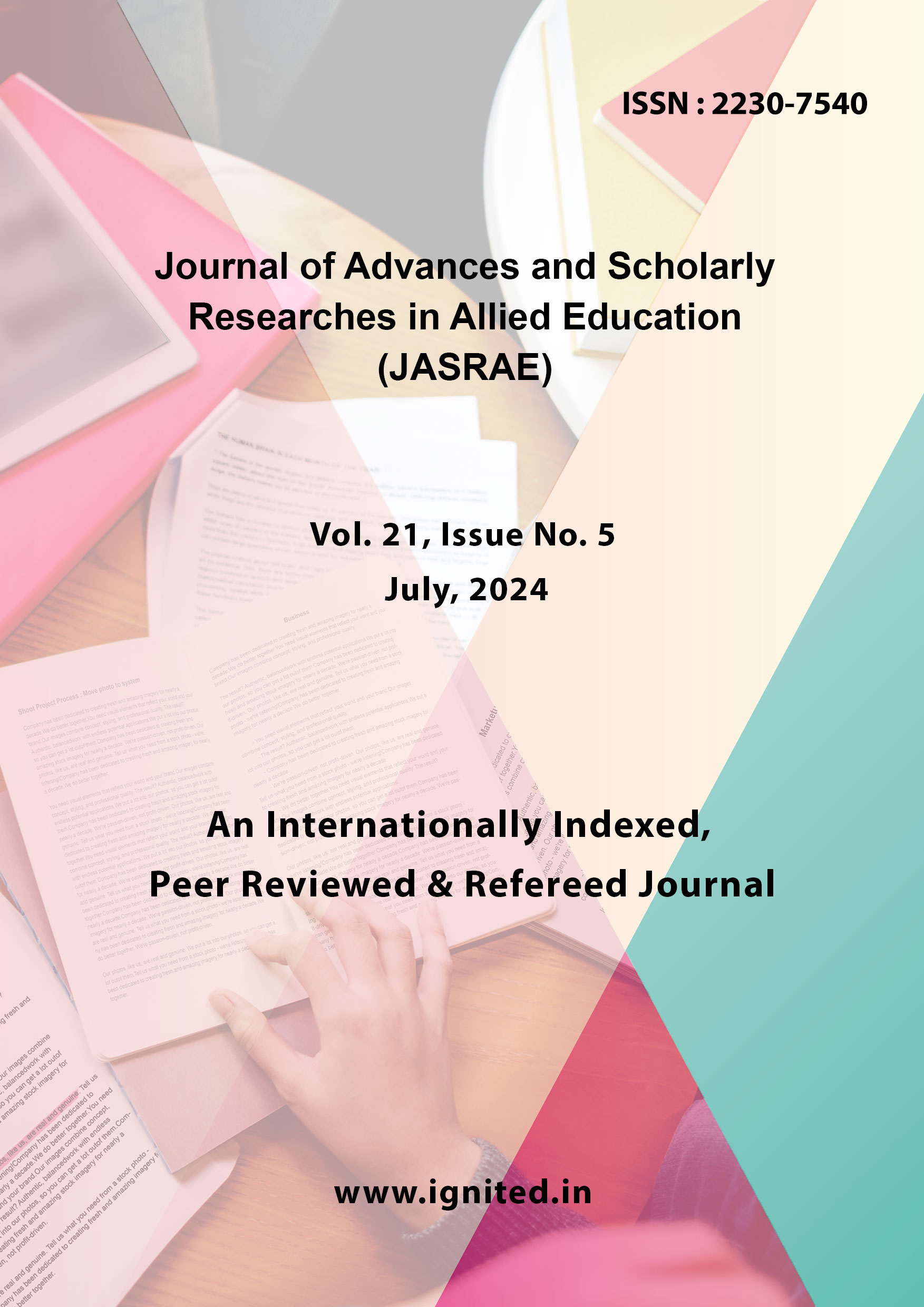Impact of Flipped Classroom Implementation on Student Learning Outcomes in Kerala State's Higher Secondary Social Science Curriculum
DOI:
https://doi.org/10.29070/bm3wkq36Keywords:
Social science, flipped classroom, higher education, Student learningAbstract
This study aims to investigate the potential benefits of implementing a Flipped Classroom model into language instruction for high school students in Kerala. Students in a Flipped Classroom may study at their own pace while still taking part in live, in-class lectures; it's a hybrid approach that combines online and in-person activities. This paradigm shifts the transmission of basic material to an external location, freeing up classroom time for students to engage in more in-depth knowledge development. The study's pre- and post-test design was a one-group one. Data was collected via examinations and questionnaires. We discovered that the estimated t-value (5.055) was much greater than the t-table value (1.710) after subjecting the data to a t-test. The purpose of this study was to introduce the flipped classroom approach (FCA) to students so that scholars and practitioners could better understand its potential applications. Using a mixed-case study research technique with triangulation, data was acquired via questionnaires and focus groups. On every measure—engagement, usefulness, efficacy, expectation, and satisfaction—the majority of students gave the flipped classroom a good review, and they were also more inclined to recommend it to their peers. The flipped classroom model has many beneficial effects on student learning, including increased motivation, critical thinking, achievement, and group projects.
References
Chen, C.-C. Effects of Flipped Classroom on Learning Outcomes and Satisfaction: An Experiential Learning Perspective. Sustainability 2021, 13, 9298. https://doi.org/10.3390/su13169298
Elham Shooli et.al “Flipped Classroom Influence on the Learner’s Outcomes: A Study Based on English Writing Courses in Iran” https://doi.org/10.1155/2022/1530290
Shao, M. M., & Liu, X. H. (2021). Impact of the Flipped Classroom on Students’ Learning Performance via Meta-Analysis. Open Journal of Social Sciences, 9, 82-109. https://doi.org/10.4236/jss.2021.99007
Birgili, B., Seggie, F.N. & Oğuz, E. The trends and outcomes of flipped learning research between 2012 and 2018: A descriptive content analysis. J. Comput. Educ. 8, 365–394 (2021). https://doi.org/10.1007/s40692-021-00183-y
Campillo-Ferrer, J.M., Miralles-Martínez, P. Effectiveness of the flipped classroom model on students’ self-reported motivation and learning during the COVID-19 pandemic. Humanit Soc Sci Commun 8, 176 (2021). https://doi.org/10.1057/s41599-021-00860-4
Alsadoon E., Alkhawajah A., & Suhaim A. B. (2022). Effects of a gamified learning environment on students’ achievement, motivations, and satisfaction. Heliyon, 8(8), e10249. https://doi.org.10.1016/j.heliyon.2022.e10249
BRAIN: Broad Research in Artificial Intelligence and Neuroscience Volume 8, Issue 2, July 2017, ISSN 2067-3957 (online), ISSN 2068-0473
Cherry K. (2022). What is motivation. Very Well Mind. https://www.verywellmind.com/what-is-motivation-2795378
Dicheva D., & Dichev C. (2015). Gamification in education: Where are we in 2015? (pp. 1445–1454). E-Learn 2015, Kona, Hawaii, United States.
Graham S., & Weiner B. (2011). Motivation: Past, present, and future. APA educational psychology handbook, vol 1: Theories, constructs, and critical Issues (pp. 367–397). https://doi.org.10.1037/13273-013











